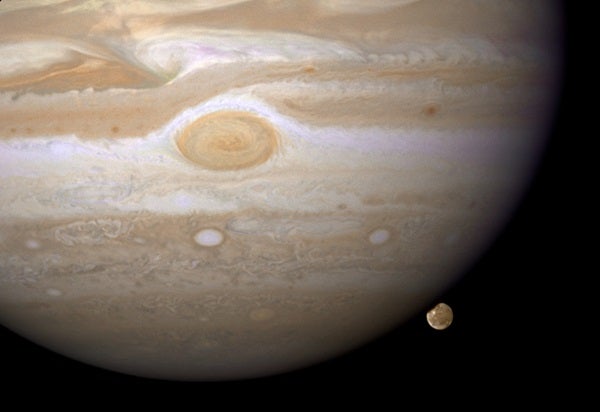In 2019, Saturn captured the title of the planet with the most moons, after astronomers announced the ringed planet hosts 82 circling satellites. (That number was further bumped up to 83 in 2021.) But now, Jupiter just took back the crown.
Jupiter now has 92 confirmed moons with orbits published by the International Astronomical Union’s Minor Planet Center. This includes 12 newly announced moons, half of which were first spotted around Jupiter within the past two years. The 12 new jovian moons are enough for the king of planets to rightfully reclaim its title as king of satellites as well.
Welcome to the family
The new moons, along with all other known jovian satellites, are listed in a table on Scott S. Sheppard’s website. Sheppard, who is part of the Carnegie Institution for Science’s Earth and Planets Laboratory, is on the team who discovered the latest moons.
He’s no stranger to hunting moons, either, leading the team that announced 12 additional moons found around Jupiter in 2018. That brought the then-total number of jovian satellites to 79. Sheppard and his team likewise found the new satellites around Saturn in 2019, which temporarily gave the ringed planet the top spot in moon count.
All the recently confirmed moons found around Jupiter are faint and smaller than 2 miles (3 kilometers) across. They orbit far from Jupiter over the course of hundreds of days, often amounting to one or two Earth years. That’s a far cry from the well-known Galilean moons, discovered in 1610, which are all thousands of miles wide and orbit Jupiter in less than 17 days. While the Galilean moons are believed to have formed with Jupiter from the same material, many of the gas giant’s smaller, more distant satellites were likely captured later on — or they may even be the remnants of collisions.
Pinning down the lengthy orbits of such small moons is a time-consuming process, as extensive observations are often required. Nonetheless, over the past two decades, the number of known moons around the giant outer planets — particularly Jupiter and Saturn — has skyrocketed. This is largely thanks to deep surveys that are capable of finding faint objects that move against the background stars.
And there are likely many more solar system moons out there just waiting to be found. So stay tuned: The race between Jupiter and Saturn for the most moons isn’t finished yet.










